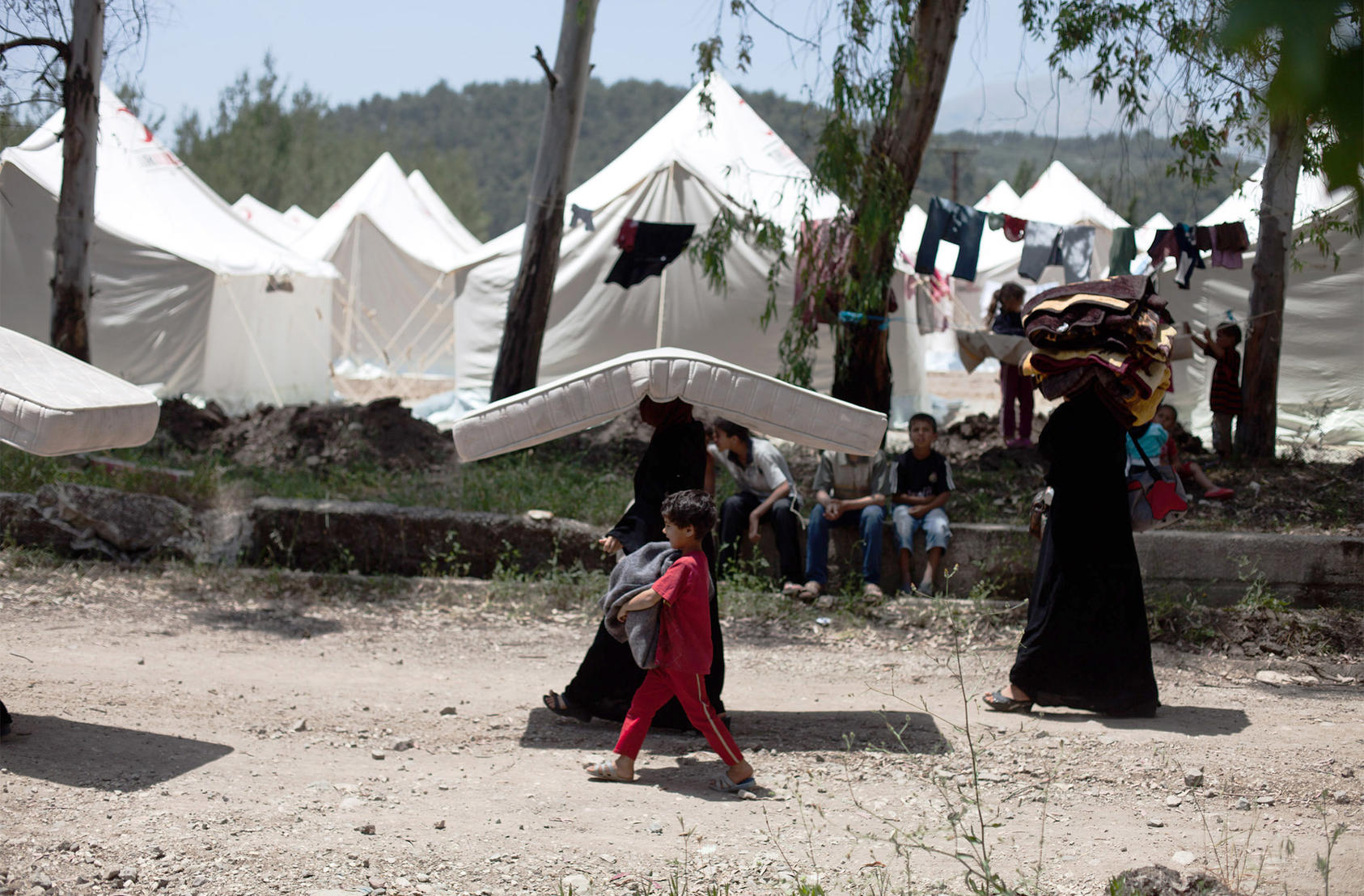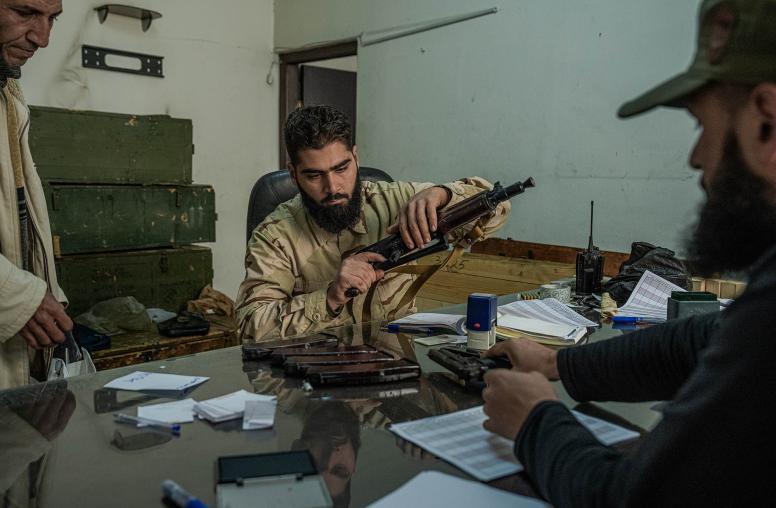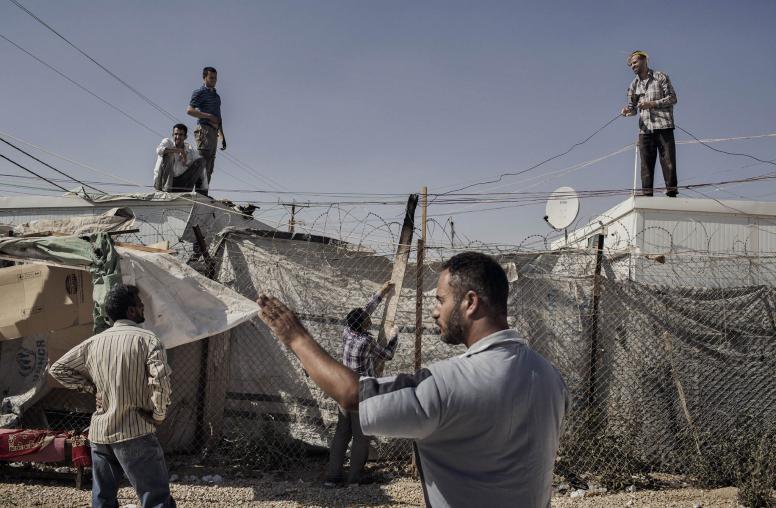COVID Will Lead to More Child Marriage—What Can Be Done?
The Syria conflict shows how crisis can exacerbate the drivers of child marriage.
The impact of the COVID pandemic continues to be felt around the world, with economies shuttered and political systems increasingly strained. Another of the downwind effects of the pandemic—one that has not been leading the headlines—is that it is expected to lead to a sharp increase in early child marriage. In many countries, when crisis hits, early child marriage increases exponentially. Nearly 10 years into its civil war, in Syria and host countries with Syrian refugees, the rate of early child marriage is now four times what it was before the conflict began. As governments and NGOs continue to respond to COVID and its economic impacts, it is critical that they implement measures to mitigate the drivers of early child marriage. This is all the more vital for countries in or emerging from conflict because a lost generation of girls will ultimately lead to stunted regrowth post-conflict due to this disenfranchised portion of the population’s lack of involvement in reconstruction efforts.

According to UNICEF, child marriage is defined as any formal marriage or informal union between a child under the age of 18 and an adult or another child. The U.N. Population Fund estimates that there will be 13 million additional early child marriages over the next decade due to the pandemic—this is in addition to the annual average of 12 million. Systemic gender inequality underpins early child marriages—globally, one in five women are married before the age of 18, and approximately 82 percent of all child marriages involve girls.
What Drives Early Child Marriage
In addition to gender inequality, three main drivers are present in most instances of early child marriage: economic insecurity, safety concerns, and lack of educational opportunity. The most common driver is economic insecurity.
Poverty and economic instability can drive families—including those who are not culturally inclined to early child marriage—toward the practice, as a coping mechanism. This happens in two ways: in the exchange of a dowry or in the relief of economic burden of having less children. “My mom didn’t have enough money to support the family,” said Suzanne Farrah, whose family fled Syria when she was 14, in an interview with the Times of Israel. Her father had been killed by ISIS, leaving her family with no source of income. “In my heart, I didn’t want to get married. But when I looked at our circumstances, I thought it would be better,” said Farrah, now 17. For many families facing poverty, the decision to wed their child at a young age may be seen as a necessary means for survival, for both the family and the child.
Lack of physical safety, particularly in areas of conflict and refugee camps, can also drive families to seek marriages for physical protection. “These families feel marriage would be the best option for a girl growing up as a refugee” because they feel a man can protect their daughters, said Ola Tebawi, an official at Jordan Health Aid Society, in an interview with the New York Times. However, there is no evidence that suggests married girls face less of a threat of harm than unmarried girls. In fact, early marriage often puts girls at greater risk of violence and harm, with complications from early pregnancy being the number one cause of death in girls aged 15-19, and with domestic violence being twice as likely in a child marriage.
Schools provide girls with resources and opportunities that empower them to continue their education rather than enter into an early child marriage. Cultural gender norms that place girls as a housewife or caregiver can dissuade a family from allowing their daughter to complete her education. In these scenarios, girls are at a much higher risk of early child marriage. Providing girls with an education is crucial to countering early child marriage because schools can provide an arena of empowerment, limits girls’ perceived dependence on a spouse for a stable future, and provide the prospect of a future career.
How COVID Makes it Worse
The COVID pandemic has greatly exacerbated these drivers of early child marriage, deepening poverty that is sure to push many families to consider marrying their daughters early to relieve some of their financial burdens.
In conflict and refugee settings, economic hardship is already present—and the pandemic has only made it worse. Recent reports have shown Syrian refugee families turning to unregistered early child marriage in their host countries, namely Turkey, Lebanon, and Jordan, for economic relief.
“We have heard of cases where Syrian families are selling their daughters to marry—either formally or informally—Turkish men. … To have one less plate at the table,” said Ezgi Yaman, the secretary general for End Child Prostitution and Trafficking in Turkey. “We heard several cases where the family couldn’t afford to pay the rent to the landlord, so they say: ‘We are giving you our daughter.’” Marrying a daughter to someone who has the financial means to provide medical resources, particularly health insurance, can be seen as a way to safeguard a young girl’s well-being during a health crisis. This is not necessarily the case, as girls are faced with increased health risks in early child marriages due to complications in early pregnancies, lack of access to adequate healthcare, and increased exposure to sexually transmitted diseases.
Pandemic-related school closures are also driving the practice of early child marriage. Due to school closures, organizations that work to deter families from turning to early child marriage are unable to access the vulnerable populations that are at high risk for early child marriage. This could lead to many families reverting to prioritizing perceived stability through marriage over an education.
School closures can also present an added financial burden to many families. Some schools provide food services to students whose families face economic hardships, making school the sole source of food for some. Though some schools are providing online schooling, many families will not be able to afford the technology needed to access these resources. Early child marriage can again be seen as a solution to these new financial burdens. Unfortunately, the pandemic has inhibited access to the primary mechanism that dissuades families from turning to early child marriage.
In every crisis, challenges are often prioritized and early child marriage is often a casualty to more immediate needs. The catastrophic human toll and the devastation to infrastructure in the Syrian conflict are rightfully at the forefront of the response and the immediate needs of the medical community have been prioritized in the COVID-19 response. However, it is vital to address early child marriage and its long-term impact on Syrian society, as post-conflict reconstruction necessitates a strong societal network of educated and capable youth.
Addressing Early Child Marriage Amid COVID
While the integration of child protection and gender analysis across some governmental and non-governmental programs is promising, the lack of a comprehensive, integrated response to the pandemic is complicating implementation. Waiting until the pandemic is over will be too late to mitigate its impact on early child marriage. Preventive measures must be included in any crisis-related response, including the response to this pandemic. Such measures include:
- Governments and NGOs must include at the forefront of the response a comprehensive post-pandemic approach to involve girls’ health and safety mechanisms in addition to the standard public health precautions. This could involve the active distribution of educational and medical resources necessary to circumvent early child marriage as a solution to financial and cultural barriers.
- Governments and NGOs should create an early child marriage hotline for girls at risk of early child marriage during the pandemic, with access to over-the-phone health resources such as reproductive health information.
- Governments must support continued remote learning in regions where internet is not available. This could involve the dispersal of educational material through the mail or providing lectures via radio to ensure schooling does not come to a full stop.
- Governments and schools should provide food services to those who face food insecurity to relieve the financial pressure of school closures on vulnerable populations.
- Schools should implement flexible learning schedules post-pandemic to account for those who entered an early child marriage or became pregnant during the pandemic to ensure that pursuing an education is feasible.
- Governments should consider providing basic income grants to families who have young children that have also lost their livelihoods due to the pandemic. This can serve as an incentive against turning to early child marriage as a financial solution.
- Governments and NGOs should prioritize initiatives that advance gender equality at the forefront of their post-pandemic recovery strategy.
For Syria to rebuild, it will need an empowered Syrian population. Syrian women must be included in all post-conflict discussions and they must be able to promote and protect their rights and the rights of Syrian girls. Ultimately, ending the practice of early child marriage requires long-term cultural change within communities, and the creation of sustainable and viable alternatives. As daunting as the task may be, addressing child marriage in the response to the pandemic and as part efforts to address conflict is vital. Without such efforts, many countries will revert to the same cycles of conflict—and millions more young girls will be robbed of their future.
Joud Monla-Hassan is a research assistant for Syria and the Middle East at the U.S. Institute of Peace.


